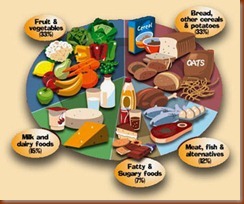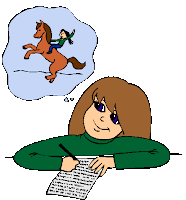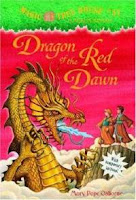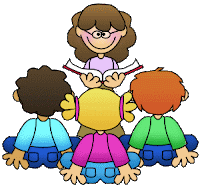- Think critically
- Communicate effectively
- Collaborate
- Create and innovate
Reading Workshop
I Can See Clearly Now
An Evolution of Change in our Reading Diet
Reluctant Reader 911
Does it always seem like it’s your students that like to read least that have the most excuses for not reading?
- I don’t have a book.
- I can’t find my book.
- I don’t like my book.
- I have to go to the bathroom.
Anything, but “I can’t wait to read.”
The hard reality of the situation is reluctant readers are the ones who need to read the most because very often they are reluctant because they are struggling. But we ask, “How? How do I get them to read more?”
What we’ve got here is reluctant reader 911 and what this calls for is:
- Be sure that somewhere in your room you have a bin of books designated for each of your reluctant readers. Instead of allowing these readers to return to your bookshelves on a daily basis, allow them one day to gather several titles that they think they might be interested in. Guide their choices and encourage them to put in picture books, comic books, non-fiction books and magazines. Be sure these collections contain no less than ten different titles. Forcing students who make a sport out of avoiding reading to take time to thoughtfully consider their interests helps to eliminate the “book” problems often faced by reluctant readers.
- Build in breaks. Nothing is more daunting to a child who knows that they are going to have to spend the next thirty minutes doing the very thing that they hate most. If you want to build stamina and commitment to reading, allow your reluctant readers to use a sand timer to help them measure reasonable chunks of reading time. When the timer runs out, allow them to get up and take a quick walk to the water fountain or stand up and stretch and then return to their reading. Even dedicated and sophisticated readers glance up from the page from time to time. Built in breaks makes the marathon seem do-able. And remember, for a reluctant reader, reading is a marathon.
- Validate their feelings. As teachers, we are very often cheerleaders for reading. We say things like, “What do you mean you don’t want to read? Reading is great!” And granted, we genuinely believe this, however, for the child who is reluctant, it’s merely a reminder of yet one more failing. Instead of coaxing, simply say, “Yep, I know how hard it is to do something you don’t want to do. When I don’t want to do something, I figure out a plan to make it do-able. Let’s figure out together what might work for you.”
How do I Know if They’re Really Understanding?
Yesterday I had a conversation with a teacher that started like this, “I have a second grader reading Harry Potter.”
Now, before I go any further, I have to ask: Is your “good fit” book radar flashing? Whenever I hear “second grade,” “Harry Potter,” and “reading” in the same sentence, the red light begins to blink. So I listened as this teacher shared how this child could name all of the characters and tell about Hogwarts Express and the sorting hat and a whole slew of other highlights from Harry Potter. She was very impressed and asked me, “So, what do you think? Is he understanding?”
This is the million dollar question that we all seem to be asking all of the time. But I didn’t want to answer her right away, so instead I shared this story, which I also want to share with you.
When I saw Kelly Gallagher on Tuesday afternoon he gave us this statistic: Three out of four people who leave jail go back within three years. He challenged us to think about what this says…and what it doesn’t say. And then he challenged us to do the same with children.
I went home and tried this with my fifth grade son. I wrote the statistic on a piece of paper and asked him, “Matthew, what does this mean?” He replied promptly. He said, “It means that three out of four people get out of jail and then go back.”
Do you see what he did there? He parroted back to me what the words say. But does he really know what they mean? Based on what he said, I would say no, so I prompted him further and said, “Yes, you’re right Matthew, that is what those words say, but what do they mean? He looked at me quizzically and took a moment to ponder this question a bit. After some thought he said, “I think it means that jail isn’t a good place. I think it’s kind of like Harry Potter. When Bellatrix Lastrange got out of Azkaban, she wanted revenge. When she went in, she was mean and nasty, but when she got out, she was way worse. I think it means that jail doesn’t help people become better.”
Wow. What a change. Now, I’m convinced that he not only understands that statistic, I’m also convinced that he really understands Harry Potter.
Understanding isn’t about summarizing what words say. It’s about thinking about what they mean. At the end of this exchange, I turned back to the teacher and asked her the same question she asked me, “Is he understanding?”
What do you think?
The Answer to a Well Balanced Reading Diet: Guided Reading Blog # 5 in the Guided Reading Series
 New York State has a standard that requires students to read at least 25 books a year. Before I left my third grade classroom to become a staff developer, I made the goal to read 25 books front and center. In addition to number of books, I was also concerned about type of books. I wanted my students to have a varied reading diet so in my classroom, the requirement to read 25 books came with a caveat: five had to be realistic fiction, five had to be poetry, five had to be picture books, five had to be non-fiction, and five could be whatever the student chose. (and then there was the hope that they’d read many books beyond the 25 required…)
New York State has a standard that requires students to read at least 25 books a year. Before I left my third grade classroom to become a staff developer, I made the goal to read 25 books front and center. In addition to number of books, I was also concerned about type of books. I wanted my students to have a varied reading diet so in my classroom, the requirement to read 25 books came with a caveat: five had to be realistic fiction, five had to be poetry, five had to be picture books, five had to be non-fiction, and five could be whatever the student chose. (and then there was the hope that they’d read many books beyond the 25 required…)
Fast forward ten years. Since leaving the classroom, I have continued to advocate for varied reading diets and recently my opinionated (and exasperated) fifth grade son said to me, “I hate it when teachers tell me what I HAVE to read. Why does it matter? Why can’t I always read what I want to read?”
So, he got me thinking. Why does it matter that children have varied reading diets? In my mind, it comes back to this: A varied reading diet introduces children to a wide range of vocabulary, it develops background knowledge, and calls upon a wide range of reading strategies. As teachers, we want students to be armed with well-packed toolboxes and if the only thing they ever read is, say, Magic Tree House, the reading process will become so automatic (inherently good) that they won’t need to practice the skills and strategies they will need for the next series or genre they feel ready for.
Basically, I felt that if I didn’t nudge my students to stretch themselves, they’d never have the tools they’d need to be good readers.
Enter guided reading.
By definition, guided reading is the time when children read instructional level texts with the support and guidance of a teacher. The purpose of these small group lessons is to accomplish exactly what I alluded to before: toolbox packing. It’s the time when I think about my students and their needs as readers. What do they need to know? What can I do to help them know this better?
One of the things they may need is guidance about new reading genres. Maybe they don’t pick up biographies because they don’t have the tools they need to navigate the text. Maybe the intersection of facts with make-believe is too complicated for a reader picking up historical fiction for the first time. Guided reading gives us the opportunity to support readers as they venture into new genres. In hindsight, my students might have groaned as much as my son at my “varied reading diet” requirement because as I have confessed before, I didn’t do guided reading. I didn’t say to them, “these are the things that you will need to be able to read these texts,” and in return they might have been saying things like, “Do I have to? I hate mystery.” Loosely translated, what that might have really been saying is, “Do I have to? I have no idea how to read that genre.”
In this series, I have questioned guided reading as a viable intermediate structure and wondered if it is more suited to primary aged children who have so much to learn about learning to read. However, when I think in terms of varied reading diet and packing reading toolboxes with the skills and strategies needed to handle a wide variety of texts, I realize even when children have a large stash of sight words and can decode new words in milliseconds, they are still learning to read. When I ask the question, “Does guided reading have a place in the intermediate classroom?” The answer is simple and indisputable: YES.
Reading Activities vs. Really Reading
Which of these activities would you consider more valuable during the time allotted for reading in your language arts block?
A: Handing out an article about the Titanic accompanied by a list of ten literal level comprehension questions for students to complete. Encouraging students to scan the text to find the answers.
OR
B: Handing out an article about the Titanic and instructing students to read it and think about the new information they learn as they read the article.
What about this scenario?
Following a mini lesson on reader’s “tone”, which do you consider to be more valuable?
A: Handing out a blank piece of paper and allowing students ten minutes to sketch the setting of their independent reading book. At the conclusion of ten minutes of drawing, asking students to switch papers with a friend and asking partners to reflect on the details of the sketch.
OR
B: Asking students to pay attention to the author’s “tone” in their story as they take out a self selected book and read independently for twenty minutes.
In my opinion, the only choice in both of these examples is B. The reason is simple. Choice B requires students to read large chunks of text for sustained amounts of time. Both Choice A examples are what I lump into the category of “reading activities”—stuff done in the name of reading that has little or no real reading involved. Little to no reading means little to no practice. Little to no practice means little to no improvement.
When it comes to student reading achievement, there are four tenets that guide all of my instructional decisions:
- Students need to read more pages.
- Students need to read more often.
- Students should not read books that are too hard.
- Students need expert guidance to grow.
If time were unlimited, maybe we could justify example A activities. However, time is a valuable commodity in education and if we waste it on neatly packaged “activities” children will never achieve the levels of proficiency and meet the standards that we aim to set for them.
Seeing it In Action: Blog #4 in the Guided Reading Series
As many of you know, my 2011 teaching resolution has committed me to learning more about guided reading and as I have studied and learned about this teaching structure, I have found myself wanting to see it in action. “Seeing” is a powerful way of learning; however, observing other teachers teach is a luxury we are not often afforded in education. And as a staff developer, it is an even greater luxury for me.
That is why I turned to the internet and spent the better part of one afternoon trawling for videos that would give me the glimpse I needed to better understand. As I watched video after video, I thought carefully about what I had learned from my textbooks and tried to reconcile that information with what I saw on the screen. I listened to the language that teachers used as they transitioned from one segment of the lesson to the next, I paid attention to how long they spent on their introductions and how much time they spent with each reader. I took notes and wrote down questions and as it turned out, I felt like this afternoon was some of the best staff development I had attended in a long time.
Watching the videos gave me a good sense of the “flow” of a guided reading lesson and I thought a lot about the planning that has to go into a guided reading lesson in order for it to be successful. In her guest blog, Leah emphasizes the need to pre-plan. She writes, “Visiting your book room and spending time choosing appropriate books for your student’s guided reading level and interest is key.” As I watched the videos, I could see how some teachers had planned carefully for their instruction and others, well, it looked like they grabbed a book, gathered some students, and read together. Clearly defining what guided reading is NOT is as important a part of my learning as gaining a better sense of what it IS and that is why I have decided to share some of the videos that I watched with you.
When you have an hour or so, get a pad and a pencil and jot down a few of your questions about guided reading. What is it that you want to better understand? Then, watch these videos. What would you emulate in your own guided reading groups? What would you steer clear of completely? At the end of the day, the big question is: How can “seeing it” inform your instruction?







